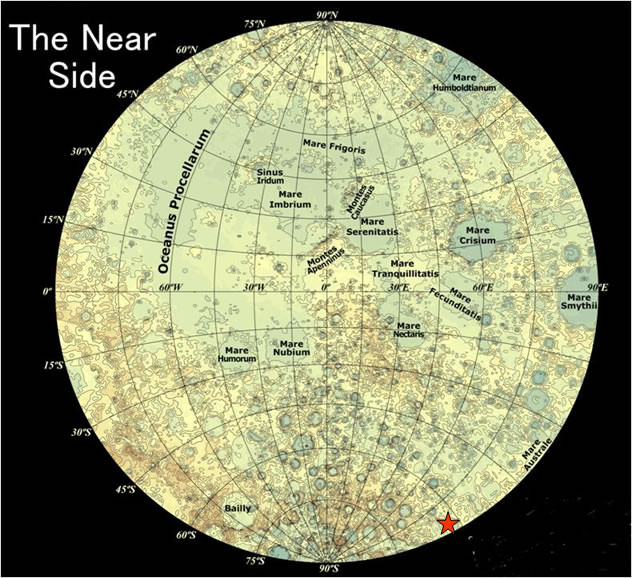[/caption]
The Japanese lunar orbiter Kaguya will end its two-year mission with a controlled impact on the Moon’s surface on June 10th at 18:30 Universal Time. The impact location is near the southeast limb at 80ºE, 63ºS. If you live in Asia and Australia, you may have the opportunity to observe the impact event, and the Japanese Space Agency –JAXA – wants to hear from you if you plan on watching for the impact. The event may be visible with a bright flash or plume. JAXA is making available precise information on the projected time and location of the event. If you are interested in observing the impact, contact JAXA at [email protected] and provide your name, location, and planned observation method.
For more information about the event, see this article on Lunar Photo of the Day.
Here’s JAXA’s page on the mission.
One of the visual highlights of the Kaguya mission was a high definition “Earthrise” movie:


There’s a nice ‘opposition effect’ visible in the video, as a seemingly brighter patch of ground at the exact opposite of the sun.
It is below the Jaxa © at the start of the film, and slowly moves upward.
You’d think there’d be more “collision expirements” – it seems to me that it’d be relatively cheap and easy to shoot a rocket at the moon and harvest abuncha info….
The European Space Agency today published pictures of the place where the impact of Kaguya.
The images were obtained by SMART-1 probe.
http://www.esa.int/esaSC/SEMM5RVTGVF_index_0.html
Valmir Martins de Morais
Estação Astronômica PieGise
Juazeiro do Norte, Ceará – Brasil
For more information on the conditions which give the impact of Kaguya, see the excellent and comprehensive website of Jim Mosher
http://ltvt.wikispaces.com/Kaguya+Impact
Valmir Martins de Morais
Estação Astronômica PieGise
Juazeiro do Norte, Ceará – Brasil
valmirmmorais: Thanks for these very informative links. Being in the US, I will be watching the IYA-UT video feed (as well as others). AFAIK, the plume predicted by NASA for the more favorable circumstances of the LCROSS mission recommended telescopes of at least 8-10 inches may be needed for visual sightings. Of course, advanced astroimagers with sensitive CCD cameras probably have an advantage here. @neoguru, during the Apollo program, several impacts by the third stage of the Saturn V were deliberately crashed into the moon so that previous seismographs left by earlier missions could record the results. These impacts (along with those of the ascent stage of the LEM) showed that the moon ‘rang like a bell’ or oscillated in a unique manner. This information gave scientists their first look at the moon’s internal structure.
I forgot to mention the problem-plagued Ranger program of the 1960s. I’m sure many have now seen the famous Ranger 7 plummet into the crater Alphonsus. Ranger probes also had a hollow balsa-wood! sphere that contained a radio transmitter that could supposedly be heard back on Earth. It was thought that the reinforced balsa-wood sphere might bounce along the lunar surface and survive impact long enough to radio Earth that ‘Ranger has landed’. I never heard if any signals from any successful Ranger mission were received.